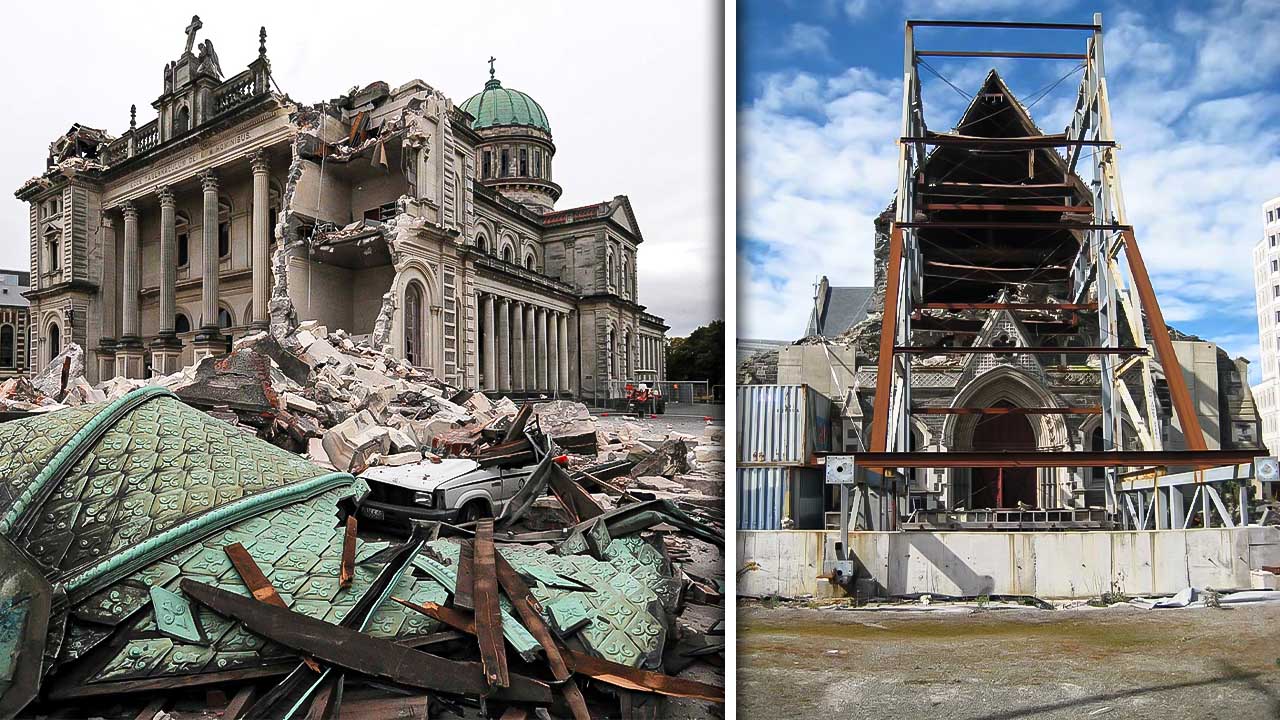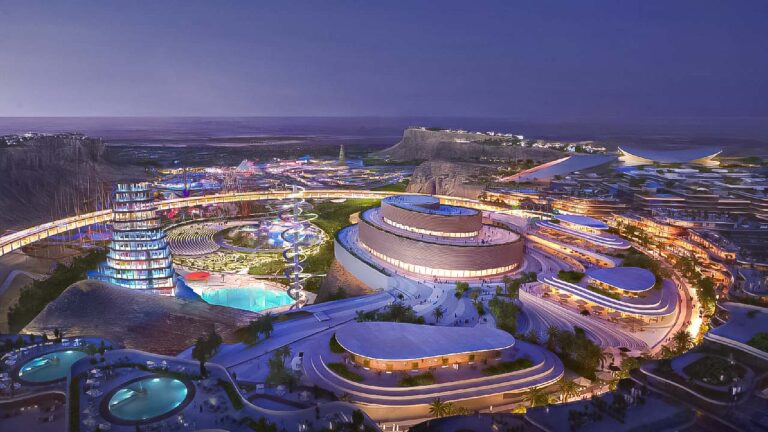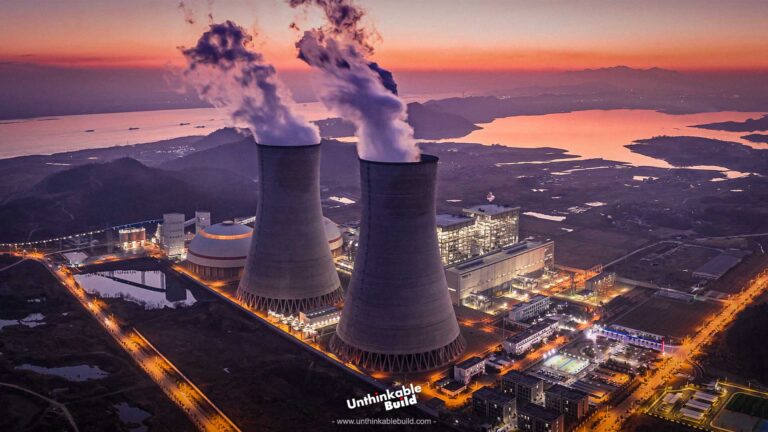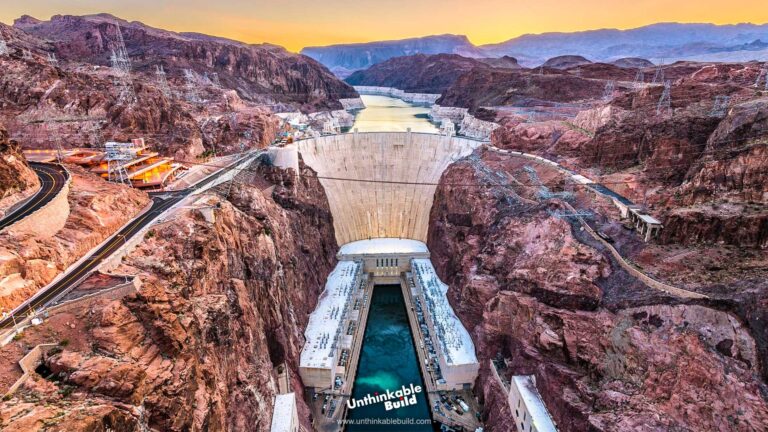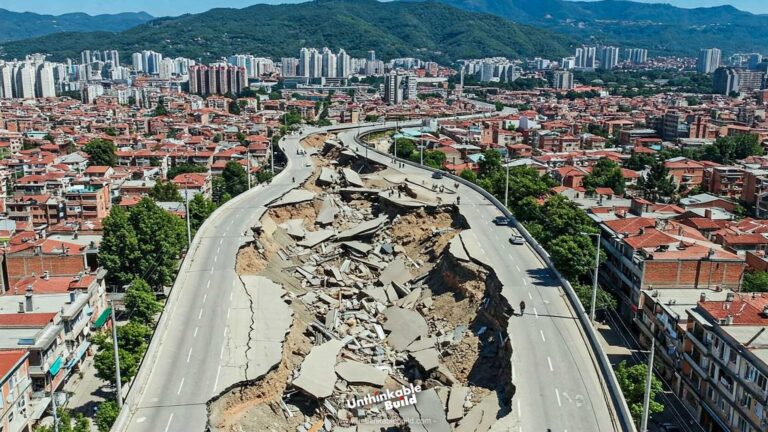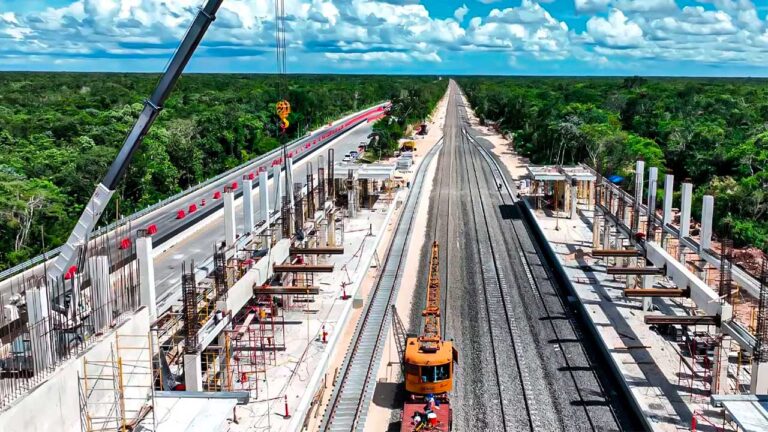The $42BN Plan to Rebuild the Entire Christchurch City from Scratch
In the passage of time, humanity’s story is marked by incidents and natural disasters that have ravaged civilizations. Amidst these tragedies, earthquakes loom as harbingers of fear, cloaked in their sudden and unpredictable nature.
Unlike the foreboding signs of storms or the gradual onset of floods, earthquakes strike swiftly and unexpectedly, catching humanity off guard. In an instant, the earth convulses, disrupting the fabric of normalcy without warning. There’s no opportunity for mental preparation against the impending chaos.
In the aftermath of such seismic upheavals, the scars left on human existence run deep. Beyond physical destruction, earthquakes imprint themselves upon the collective psyche of civilization, weaving narratives of loss and resilience that endure across generations.
The Christchurch earthquakes, a harrowing chapter in New Zealand’s history, unfolded between September 2010 and December 2011, leaving an indelible mark on the city and its residents. The seismic saga began with the principal event on September 4, 2010, a jolting reminder of nature’s power as a magnitude 7.0 to 7.1 earthquake struck at 4:35 am. Centered approximately 40 kilometers west of Christchurch near Darfield, this tremor originated from a previously unknown fault beneath the earth’s surface, later named the Greendale Fault. Despite its devastating force, the initial quake spared the city from direct fatalities, though it set the stage for a series of thousands of aftershocks that rumbled on in the months to come.
Just when the city began to regain its footing, tragedy struck anew on February 22, 2011. At 12:51 pm, Christchurch was rocked by a severest aftershock, this time measuring a magnitude 6.3. Unlike its predecessor, this tremor originated from oblique thrust faulting along a different, previously undiscovered fault line. Both events, stemming from the dynamic interplay of tectonic plates, highlighted the vulnerability of the region to seismic activity.
Also Read: Saudi Arabia Races to Complete the $22B Riyadh Metro on Time
The Christchurch earthquakes left behind a landscape scarred by destruction and loss. Buildings crumbled, streets fractured, and lives were forever changed. The earthquake, measuring 6.3 in magnitude, exacted a heavy toll, claiming the lives of 185 individuals and reducing a staggering 80% of the city center to rubble. Yet, amidst the devastation, the spirit of resilience shone brightly as communities rallied together to rebuild and forge a path toward recovery. Though the ground may have shaken beneath their feet, the people of Christchurch stood steadfast, united in their determination to overcome adversity and emerge stronger than before.
In the wake of such tumultuous earthquakes, a symphony of resilience unfolded as the city rallied to compose a bold recovery plan. Like artists with a blank canvas, local leaders, alongside government partners and community visionaries, embarked on a transformative journey to rebuild the city and restore hope.
In the aftermath, a collective effort of recovery and renewal took shape, guided by a series of ambitious plans. Initiatives like the Waimakariri Residential Red Zone Recovery Plan, Lyttelton Port Recovery Plan, Residential Red Zone Offer Recovery Plan, and Land Use Recovery Plan set the stage for Christchurch’s resurgence. Notably, the Christchurch Central Recovery Plan emerged from the voices of its people, incorporating a staggering 106,000 ideas into its blueprint for reconstruction.
At the heart of this recovery opus lay the restoration of the city’s beating infrastructure. Roads, bridges, and utilities, shattered by the seismic crescendo, were painstakingly reconstructed, woven anew into the urban fabric with a blend of innovation and determination. Each brick laid and each beam raised became a testament to the city’s unwavering spirit and resolve.
Amidst the rubble-strewn streets of Christchurch, a tale of diverging visions unfolded, painted with the bold strokes of politics and pride. The grand plan, a blueprint for resurrection, etched its ambitions in the form of 17 anchor projects, each a beacon of hope amidst the city’s shattered landscape.
In the quiet corridors of city halls and amidst the hum of construction machinery, a grand symphony played out—a symphony of resilience, collaboration, and unwavering hope.
Also Read: Will Japan Be Able to Fix This $20B Sinking Kansai Airport
The ink dried on the Global Settlement Agreement, a pact forged between the city council and the central government. It was a promise carved in stone—a commitment to restore what nature had so mercilessly shattered. The government, with a solemn nod, pledged A$ 2.9 billion, while the council, with equal resolve, set aside A$ 1.9 billion. Together, they would craft a new narrative for Christchurch, stitch by stitch.
The architects and engineers recalibrated their compasses. The initial estimate of $30 billion swelled, like a tide reclaiming its shore, to a staggering $40 billion. The Treasury nodded knowingly; this was no ordinary reconstruction. It was a symphony of numbers—the cost of dreams, the price of resilience, and the currency of hope.
The draft of the Long Term Plan lay open on the council chamber table. A roadmap for the next decade — $6.1 billion earmarked for capital projects. The city’s pulse quickened as bridges were reborn, parks resurrected, and schools stood tall once more. The Long Term Plan whispered promises to generations yet unborn—a legacy etched in concrete and steel.
The landmark of the city, Christ Church Cathedral, spires reaching for the heavens, bore witness to both tragedy and triumph. The ledger revealed a projected cost of $158.8 million for its reinstatement. The faithful rallied—a symphony of fundraisers, bake sales, and charity galas. The government’s contribution stood at $106.2 million, leaving a gap—a note waiting to be sung by those who believed in miracles. And so, the city orchestrated a spectacle—a ballet of cranes soaring against the sky, a harmonious collaboration between architects and artisans. The sun, too, played its part, illuminating the rebuilt streets with its golden rays. The people, their spirits synchronized with the cadence of jackhammers, understood that this endeavor transcended mere construction materials. It was a hymn—an affirmation of Christchurch’s resilient soul.
Over the past decade, Christchurch has undergone a profound transformation—a symphony of resilience orchestrated through architectural innovation and communal solidarity. Formerly desolate sites now boast towering commercial skyscrapers and chic retail spaces, breathing new life into once-vacant landscapes. Civic and cultural landmarks, painstakingly restored or rebuilt from the ground up, stand as enduring symbols of resilience and renewal.
The Christchurch Basilica, with its spires once shattered, now stands tall as a silent witness to the city’s indomitable spirit. Generous contributions, totaling $158.8 million, served as the harmonious notes in a symphony of reconstruction, bridging financial divides and restoring hope.
Amid the reconstruction efforts, invaluable lessons in resilience were gleaned. The Stronger Christchurch Infrastructure Rebuild Team shared its wisdom, offering guidance to other cities grappling with post-disaster reconstruction. However, the journey was not without its challenges, as the intricate coordination between local and national government entities, led by the Canterbury Earthquake Recovery Authority, presented formidable obstacles to progress.
Mayor Lianne Dalziel, reflecting on Christchurch’s journey, now sees the city through a lens of renewal and possibility. Vibrant streets pulse with life, concealing the scars of adversity beneath layers of determination and optimism. However, the cost of this transformative endeavor has been steep, totaling $40 billion or more—a currency paid not only in monetary terms but also in the sweat, tears, and unwavering hope of Christchurch’s resilient community.
As Christchurch continues to evolve, it stands as a testament to the enduring resilience of the human spirit—a city reborn, its symphony of strength echoing through the annals of time.
The restoration of iconic landmarks like the Christ Church Cathedral symbolizes a delicate balance between preserving heritage and embracing modernity—a testament to honoring the past while boldly stepping into the future.
The scars of the earthquake endure, etched into the cityscape as a solemn reminder of the past. Yet, by acknowledging trauma, Christchurch sets the stage for collective healing and resilience.
Through the rubble, Christchurch whispers a tale of hope—a melody that resonates with courage and resilience. It reminds us that even in the darkest moments, there is always a song waiting to be heard.

